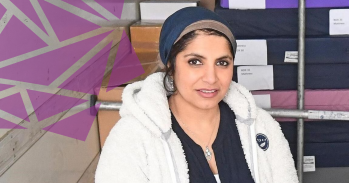
In this article – originally published on CRIAViews, the blog of the Cambridge Review of International Affairs – Lucy Thirkell explores some of the reasons behind the tragic and seemingly endless cycle of conflict in Gaza.
In this article – originally published on CRIAViews, the blog of the Cambridge Review of International Affairs – Lucy Thirkell explores some of the reasons behind the tragic and seemingly endless cycle of conflict in Gaza.
This situation is self-sustaining, doomed to repeat itself over and over
Lucy Thirkell
In February 2013, the ArcMed Hotel in Gaza City hosted a conference entitled, ‘War on Gaza: consequences and future prospects’. The conference, arranged by leading Gazan think tanks and civil society organizations, with sponsorship by local media groups, featured speakers from among Gaza’s intellectuals, policymakers (including Hamas politicians), students and some international voices.
Gaza had recently dusted itself off after 2012’s ‘Operation Pillar of Cloud’ and wanted to take stock. The very premise of the conference took for granted that war would come to Gaza again. ‘Pillar of Cloud’ was designed to ‘dismantle the capabilities of Hamas to wage violence upon Israel’. This it did not do.
Indeed, one Hamas official at the conference boasted, “In 2008 we were beaten, 2012 was a draw. Next time we will win!” At the closing session of the conference, Ismail Haniyeh went further, positing that the 8-day war had exposed Israel’s myth of military supremacy and that Hamas had won “a military and political victory”. This input from policy-makers was terrifying for its disconnection with the reality of being Gaza.
The 2012 war began with a general escalation: rockets from Gaza met by shelling from Israel. Details of a truce were negotiated, but as Hamas military chief of staff, Ahmed al-Jabari sat reading the document, he was assassinated by an Israeli airstrike. Israel went on to launch an air and sea offensive. Then something unprecedented happened: Egyptian Prime Minister Hazem Qandil visited Gaza during the bombardments, following visits by buses of Egyptian solidarity activists. Together, Egyptian leaders and public opinion demanded and worked for a ceasefire.
However the Morsi ceasefire was built for immediate respite and addressed no long-term issues. As such, it was a crude stitch across a wound requiring long and difficult surgery. As yet, nobody has seemed willing to consider that procedure. Peace talks between Israel and the Palestinian Authority failed yet again this year, spelling out the certainty of renewed hostilities at some point.
So far, no convincing peace plan has emerged for this latest round of battering Gaza and Hamas. The first ceasefire proposal process was bizarre: Tony Blair talking to Egyptian President Sisi talking to Israeli Prime Minister Netanyahu. It offered about the same prospects for success as the 2012 ceasefire; and Hamas, as well as many other Gazans, demanded a more robust solution.
This situation is self-sustaining, doomed to repeat itself over and over. If we are going to think seriously about ending this cyclical violence, we must begin by understanding why it occurs and then dynamically rethink the inputs that sustain it. There are four key reasons:
First, because it can: Gaza is not the West Bank. The current escalation began in the West Bank with the abduction and murder of three Israeli teenagers near Hebron by a Hebron-based splinter cell, the brutal treatment meted out during the search for them and the reprisals following the confirmation of their deaths. With the West Bank erupting in anger, Hamas and Islamic Jihad joined in with rockets from Gaza. The Israeli military focusing its retaliation on Gaza neatly contained much of the verve of the conflict to a manageable and isolated entity—a political punch bag. It happens in Gaza because that is what Gaza is currently for. Unpacking that are the reasons below.

Without official international support (from Egypt or elsewhere), Hamas’ agenda is at an all-or-nothing point. All it has to do is not surrender; all Gaza has to do is survive another bombardment. The cruel thing is that this strategy is politically effective. Hamas is far more sophisticated than international observers understand: they successfully cleaned up and policed one of the most violent strips of land in the Middle East and stopped a civil war by being better organized and more forceful than any opponent or militia active in the Gaza Strip—and there were a lot of those. This is the group the international community blithely suggests Gazan civilians overthrow, but Gazans’ view of Hamas and of political violence in their name is more complicated than that. Amidst dire conditions and regular conflict (one recent report estimates the strip will be uninhabitable by 2020 when it's projected to have over 2 million inhabitants), Gazans have little to lose. Pushing for a better deal from a ceasefire, a better ‘normal’ seems an entirely logical policy. Indeed, as seen in 2008-2009, Hamas can gain a lot of popularity even by losing militarily, while Fatah’s and Palestinian President Abbas’ ratings tumble and general hostility towards Israel among the general Palestinian population rises.
What precisely ‘winning’ is in this scenario—for either side—is far from clear. Both sides seem to have a single, religious state in mind as their ultimate objective. This week Netanyahu intimated a withdrawal of his previous rhetorical support for a two-state solution. Just maintaining the status quo is a short-term step in that direction. Hamas’ stance on the two-state solution had softened of late—with Khaled Meshal going so far as to state in 2007, ‘I speak of an Arab and a Palestinian demand to have a state on the ’67 borders. True, by inference, this will mean there is an entity or a state called Israel’.[1] But yet another war with Gaza is unlikely to persuade them that anything other than a unified Islamic state is in their interest.
Therefore, this fight against Gaza sets Israeli hawks and Hamas as crude apes of each other. Both compete actively for the claim of greater victimhood and develop their long-term goals from this suffering. Israeli calls for Netanyahu to ‘finish inside this time’ and other euphemisms seem to be getting at is a similar fetish of victimhood. With the first, tentative steps of Israeli soldiers into the Gaza Strip came an Israeli fatality, many more followed. An obscene contest of death. Harald Wydra (2013) recently wrote for CRIA on the globalization of empathy for even potential victimhood, referring predominantly to the 2003 invasion of Iraq. That attackers must be victims is a new, mimetic quality of war, international law and public opinion, eloquently described by Wydra. Dating back to the Second Intifada, Hamas has had the policy of retaliating against Israeli attacks on Palestinians aiming for a strike-for-strike ratio, an equality of ‘horror’.[2] The thing is that Israel has a similar policy with regard to rocket fire from Gaza. Meanwhile, both Hamas and the IDF have well-followed Twitter accounts and seem to put engagement with international public opinion before engagement with each other. This allows each party to look only to its goals and its winning or losing a global empathy struggle while reality staring each party in the face is conveniently obscured.
Finally, let us imagine that this war does manage to render Hamas harmless (though there are scant figures on insurgencies successfully disarmed through military action rather than political processes that would point to the true likelihood of that). All that scenario represents is a huge promotion for Islamic Jihad, among other groups, who would pick right up where Hamas left off sooner or later. And so the violence would continue, because the structural factors that produce it would not have changed.
The famous definition of madness is doing the same thing over and over but expecting different results. The series of rationalisations that produce this perpetual war in Gaza is surely just madness. But continue it will. Stopping the cycle once and for all will require dynamic new thinking and mutual understanding from all parties.
As Harald Wydra concluded in his article on new wars: ”Therefore, one cannot limit the identity of antagonists to essentialist views that oppose ‘our’ civilizational religious allegiance or cultural heritage to ‘theirs’. Military resources vary enormously; strategic goals of states differ substantially from those of warlords or suicide bombers. Yet, justifications of killings insist on the uniqueness, righteousness and legitimacy of one’s own cause. Rivals model their ‘autonomous’ decisions after the other’s perceived intentions. […] The identity here rather emerges from the mimetic contagion according to which self-attributed collective victimhood provides a moral right for the initiation of hostilities against others.”
Lucy Thirkell is a PhD candidate at Fitzwilliam College and in the Department of Politics and International Studies, studying the politics of commerce in Gaza City, and a former Editor-in-Chief of CRIA.
Read more from CRIAViews here.
Inset images: Bombed house in Gaza, 2008 by Marius Arnesen (Att - NC); Pray for Gaza by Duncan C (Att - NC)
Citations
[1] Baconi 2014 [unpublished] citing The Economist, March 24 2007
[2] Baconi 2014 citing ‘Suicide bombing between supporters and opponents’ Filistin al Muslima, October 17 2002.
The text in this work is licensed under a Creative Commons Licence. If you use this content on your site please link back to this page. For image rights, please see the credits associated with each individual image.





